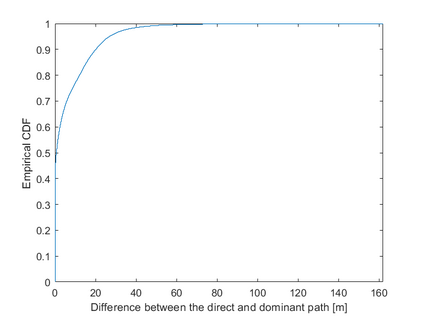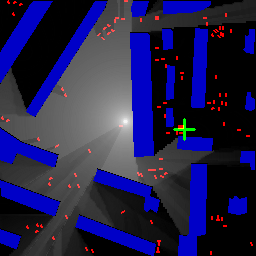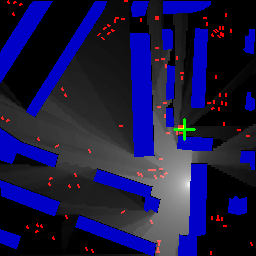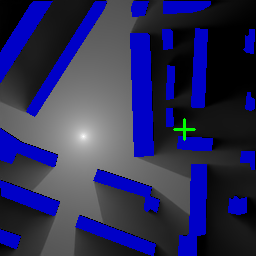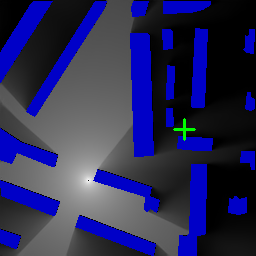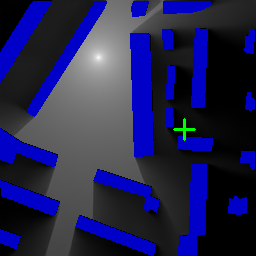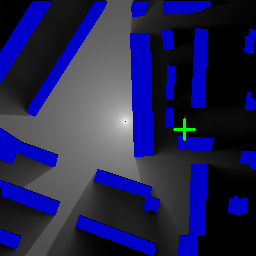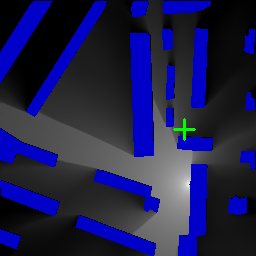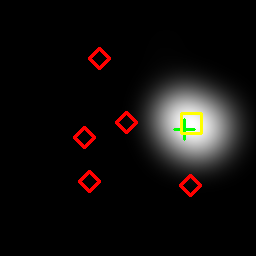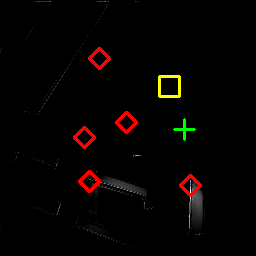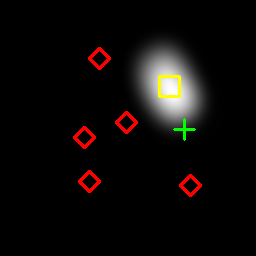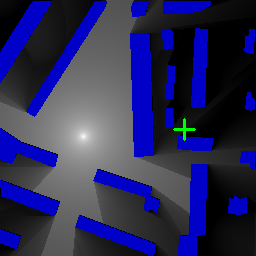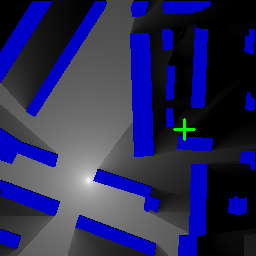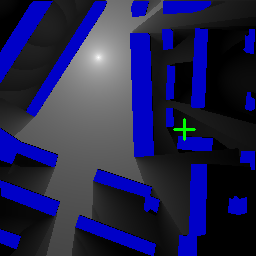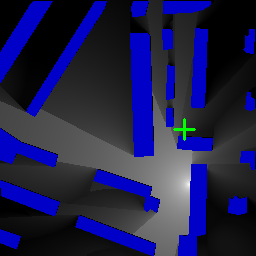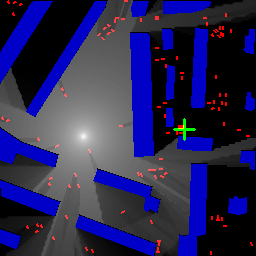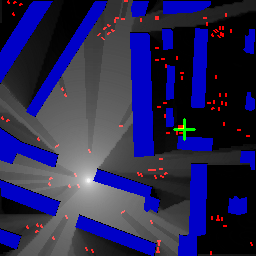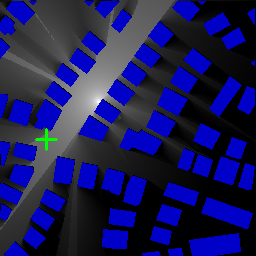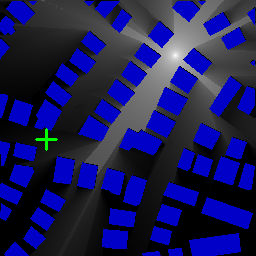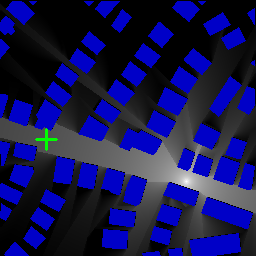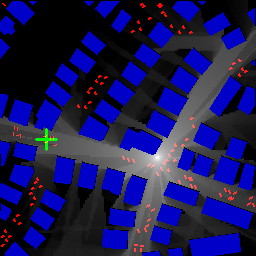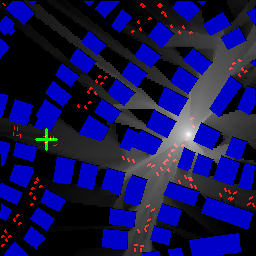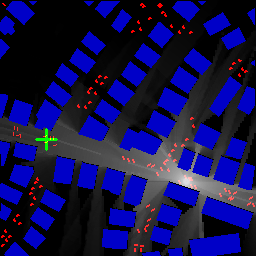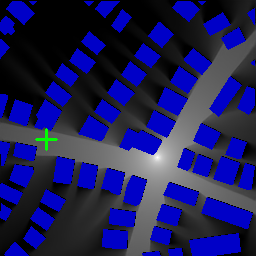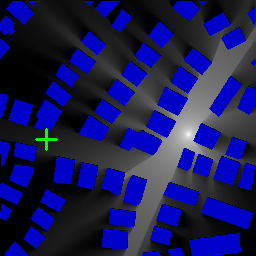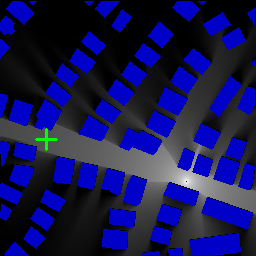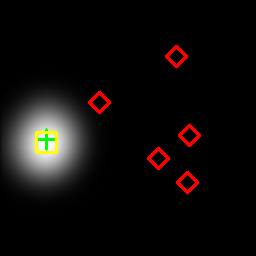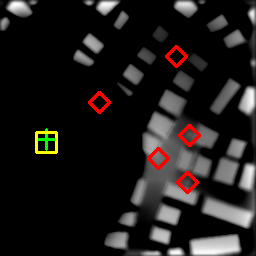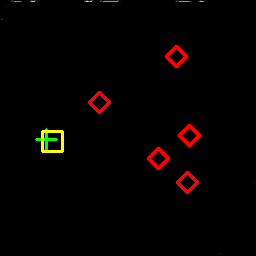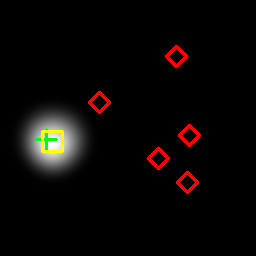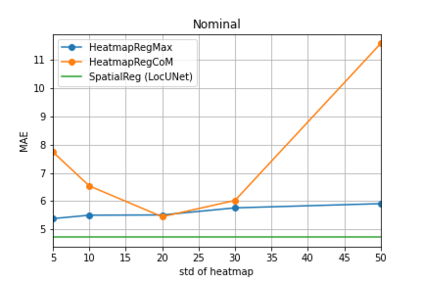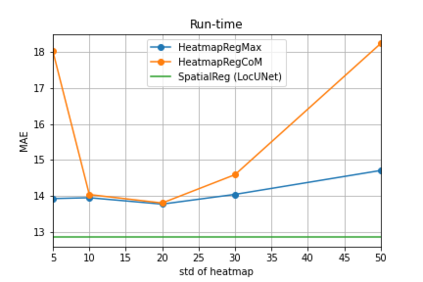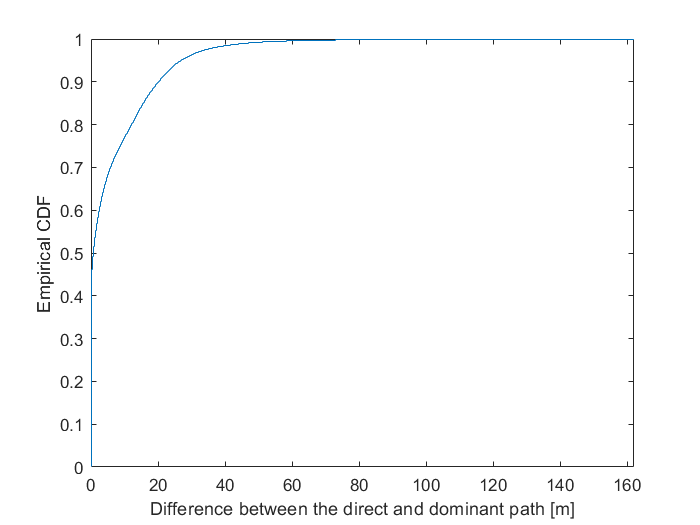This paper deals with the problem of localization in a cellular network in a dense urban scenario. Global Navigation Satellite Systems typically perform poorly in urban environments, where the likelihood of line-of-sight conditions between the devices and the satellites is low, and thus alternative localization methods are required for good accuracy. We present LocUNet: A fully convolutional, end-to-end trained neural network for the localization task, which merely depends on the received signal strengths (RSS) from Base Stations (BSs).In a wireless network, user devices scan the base station beacon slots and identify the few strongest base station signals for handover and user-base station association purposes. In the proposed method, the user to be localized simply reports such received signal strengths to a central processing unit, which may be located in the cloud. Alternatively, the localization can be performed locally at the user. Using the pathloss radio map estimations and the RSS measurements, LocUNet can localize users with state-of-the-art accuracy and enjoys high robustness to inaccuracies in the estimations of the radio maps. The proposed method does not require pre-sampling of the environment; and is suitable for real-time applications, thanks to the RadioUNet, a neural network-based radio map estimator. Moreover, two novel datasets that allow for numerical evaluations of RSS and ToA methods in realistic urban environments are presented and set publicly available for the use of research community. By using these datasets, we also provided a fair comparison of state-of-the-art RSS and ToA-based methods in the dense urban scenario, LocUNet outperforming all the compared methods.
翻译:本文涉及在密集的城市情景下在蜂窝网络中定位的问题。 全球导航卫星系统通常在城市环境中表现不佳,在城市环境中,设备与卫星之间视线条件的可能性较低,因此需要有其他的本地化方法,以保持准确性。 我们介绍LocUNet: 本地化任务完全连锁、端到端经过培训的神经网络,仅取决于基地站接收到的信号强度。 在无线网络中,用户装置扫描基地站信标位置,并查明少数最强的基础站信号,用于交接和用户-基地站联系。在拟议方法中,用户仅将这种信号强度报告给中央处理单位,而中央处理单位可能位于云层。 或者,本地化可以在用户中进行。 使用路标损失无线电图估计和RS测量,LocUNet能够将用户以最精确的准确度定位本地化,在估算无线电站站站站站站站站站站站点和地面站站站站站站站站点联系点时,用户拥有高度的准确性。 在拟议的方法中, 使用实时的网络和最新数据环境评估方法,我们不需要进行实时的地面评估。 。 将实时网络和地面环境进行实地评估,在实时环境上进行实时评估,在实时评估时,在实时环境上进行实时评估。 。 使用这些系统环境上,, 将实时评估,在实时评估,在实时评估,在实时评估中,使用这些地面环境上,在实时和地面上,在实时环境上,,使用这些系统评估,使用实时环境上进行实时数据评估,在实时评估, 和地面环境上进行实时评估。

